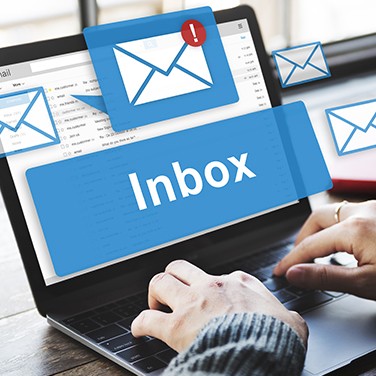6 Tips for Improving Email Communication
By Jim Bilger
Vice President, Customer Service
When it comes to email communication, nothing frustrates people more than opening their inbox and seeing 12 messages on the same topic. But there are some simple strategies you can employ to improve email interactions.
Identify Your Target
The first thing to address is the dreaded group email. Rather than casting emails out to a large group and posing open-ended questions into the ether, it’s more effective to target your messages specifically to those with whom you need to communicate.
Otherwise all the recipients are forced to parse through the original email and its replies in an attempt to find out whether the sender’s issue pertains to them and determine whether they need to reply or someone else does.
This will also help reduce the “reply all” syndrome, which can lead to people ignoring your email or giving up because the effort to read through all 12 replies is simply more time than they want to invest.
Get to the Point
Be clear and concise with your message and your intent. And don’t use an email message to write a book. If you have to write several paragraphs to convey the information you intend to disseminate, the point of your email will get lost.
Likewise, a large number of email replies — especially replies asking for clarification to points the sender thought were sufficiently explained — is a pretty good indication that another form of communication is needed to resolve the issue at hand.
Give Me a Deadline
Timing is an important detail in email communication that’s often overlooked. Always be specific about when you’re looking for that reply to come back. If you’re not specific, people will either read it, assume it’s urgent, and drop everything to help you, or they’ll put it aside and get to your request when they have time.
When someone sends a message with high importance (accompanied by Microsoft Outlook’s red exclamation point or a similar emphasis), it’s clear that somebody needs something. But once again, it’s important to be explicit about the timelines and due dates of what’s needed and who it is needed from.
This is particularly important with my customer service team. If an email comes in late on a Friday afternoon detailing an issue with an order, they need to know if it’s something that has to be dealt with immediately or if I they can give it their full attention on Monday morning and still meet the needs of the customer.
Time to Schedule a Meeting
I’ve been working with my team on stopping the never-ending email cycle and knowing when it’s best to pick up the phone. With my team, the rule of thumb is six emails. If it takes six emails to resolve an issue, schedule a meeting. And in some cases, six is too many. When you see that “reply all” back and forth, it’s a clear sign that email is not an effective method to address the need. Connecting by phone can be difficult given everyone’s busy schedules, but in many cases, it is best to get on the phone and talk through it.
Skip the Shorthand
While shorthand might work for texting and social media, you should steer clear of abbreviating words and phrases in professional emails. It might be acceptable to reply with a well-timed “LOL” in rare instances, but in general, clarity of the message is the ultimate goal.
Social media shorthand and other abbreviations can hinder a recipient’s ability to understand the message. And by all means, double check your spelling and grammar before the email goes out.
Putting in the Work
These strategies for improving email communication aren’t always easy to implement, but they’re vital to the success of a worldwide company like Thermo Fisher Scientific. With some training and support, your team can improve its interactions and their communication skills.



